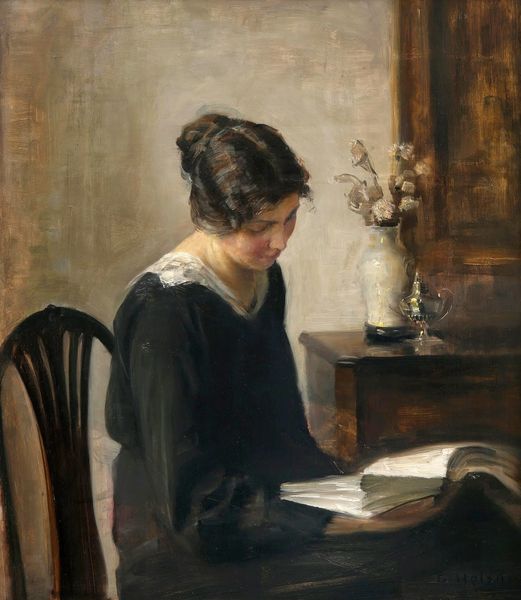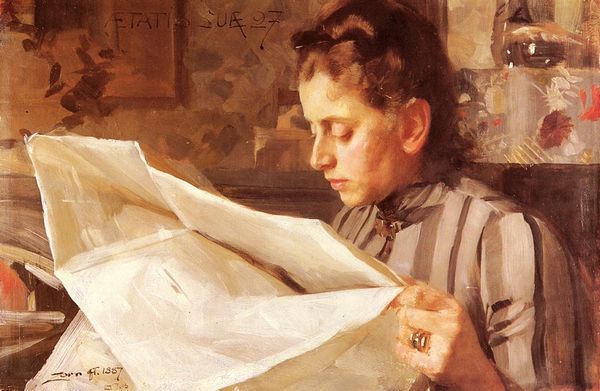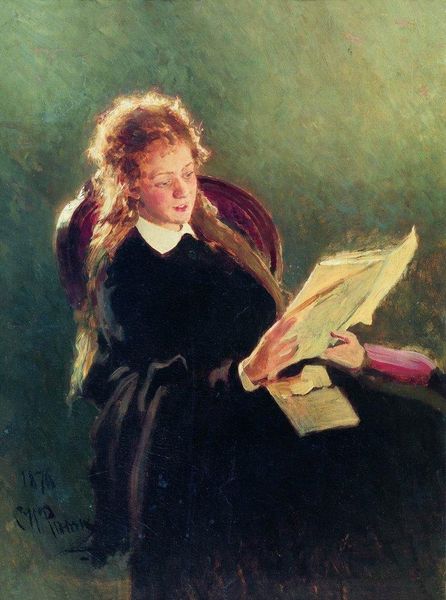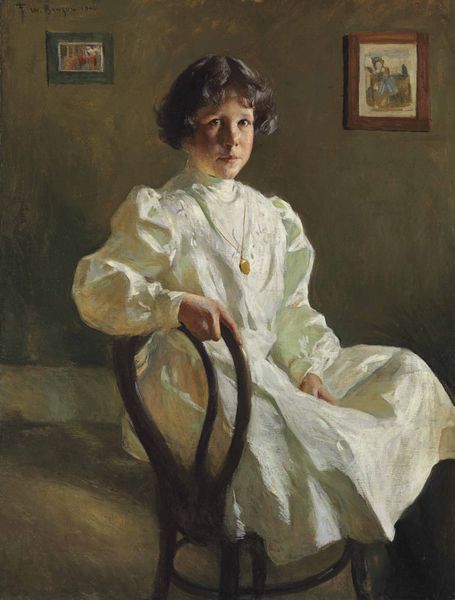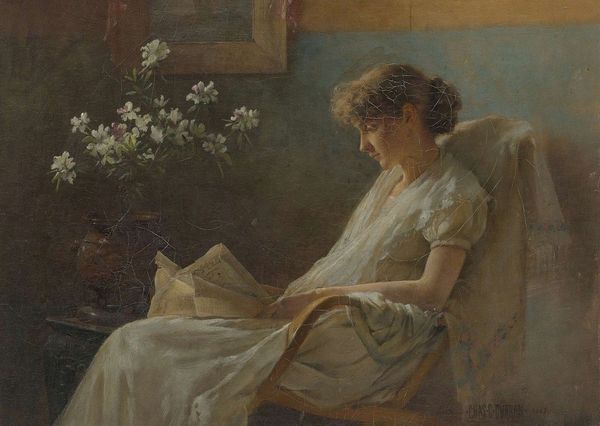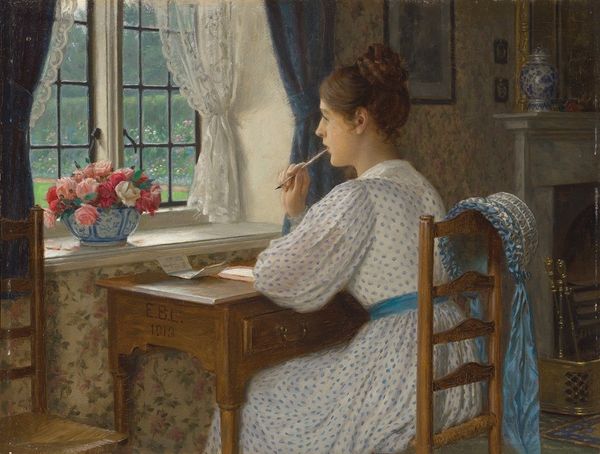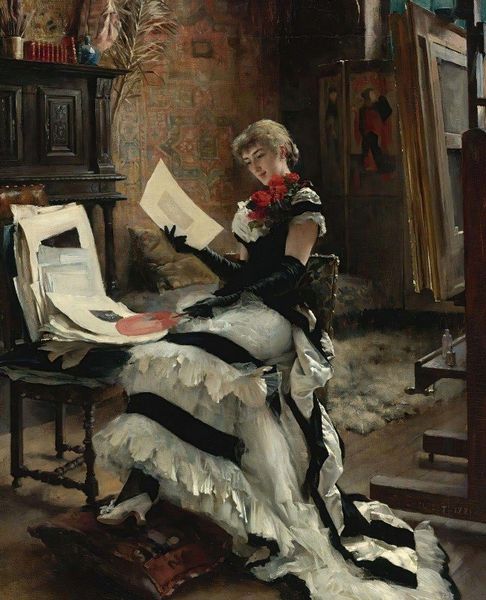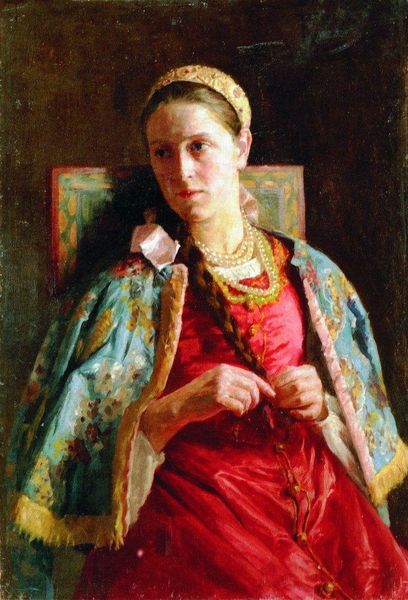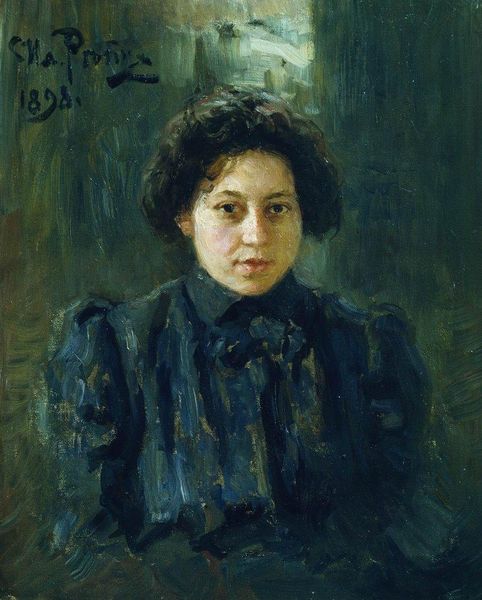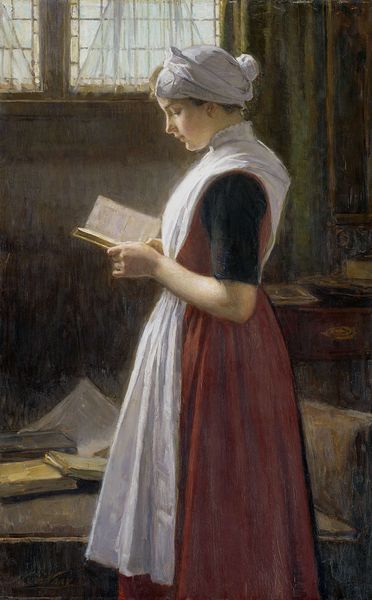
Copyright: Public domain
Editor: This is Ilya Repin's "Portrait of K.B. Boleslavova," painted in 1913, using oil. I'm really drawn to how Repin captures the sitter's gaze. What social dynamics do you see playing out here? Curator: That gaze is key, isn’t it? Repin painted this on the eve of immense social upheaval. Consider Boleslavova's pose, poised with pen in hand. Is she a passive muse or an active participant in the rapidly changing world? What does the prominent placement of the writing implements suggest about the role of women at that time? Editor: That’s fascinating. So you're saying it’s not just a portrait but a statement? Curator: Exactly! Think about the broader context: the rise of feminist movements, the questioning of traditional roles...Repin, though associated with realism, subtly inserts her into these discussions by presenting her as intellectual, perhaps even challenging viewers' expectations of women’s roles. How does that inform your view of the painting’s overall mood? Editor: I hadn't considered that before. I thought she just looked serene, but now I see a subtle defiance. Curator: Precisely! And the red backdrop, typically associated with power, can be seen here through the lens of the Bolshevik revolution that started 4 years later. Power isn’t static; it’s negotiated. What would it mean if this portrait embodied some kind of a prelude of class consciousness? Editor: That’s changed my entire perspective on the painting. It is exciting to reconsider it as a moment of individual female strength in such revolutionary times. Curator: Indeed. The painting stops being 'just' a portrait; it’s a layered document of a crucial historical moment.
Comments
No comments
Be the first to comment and join the conversation on the ultimate creative platform.
